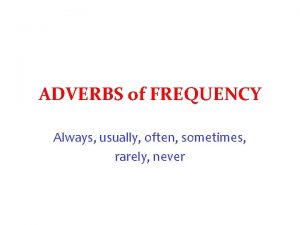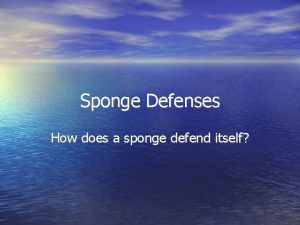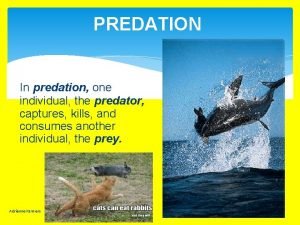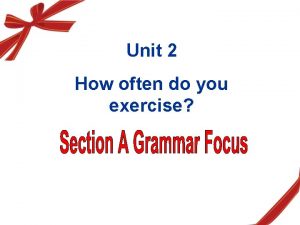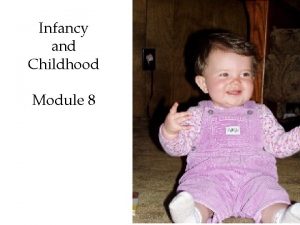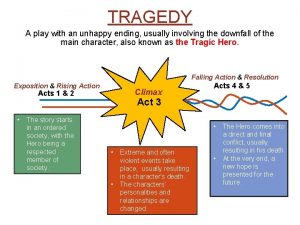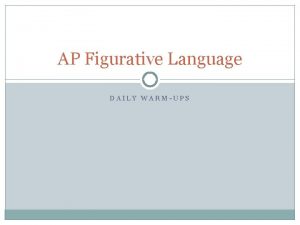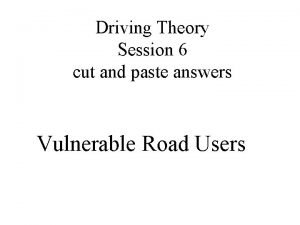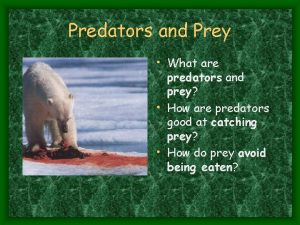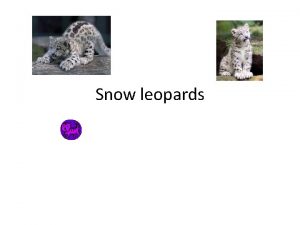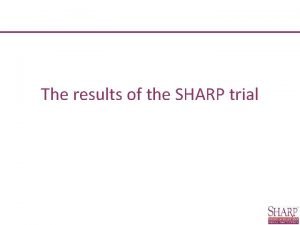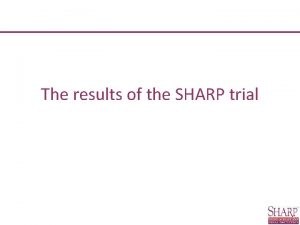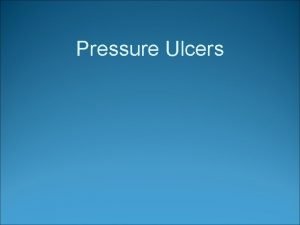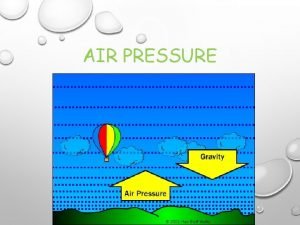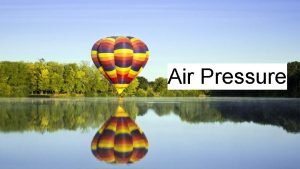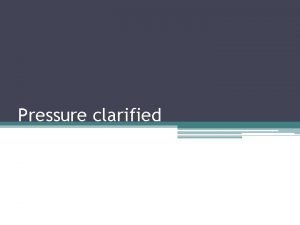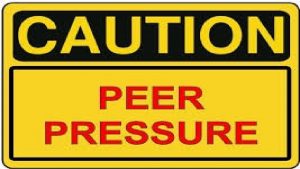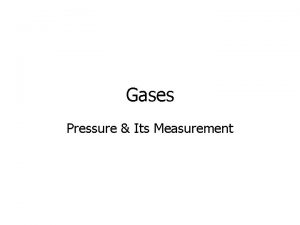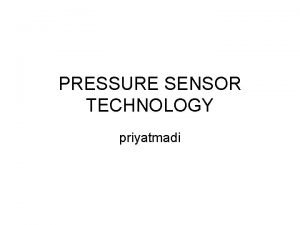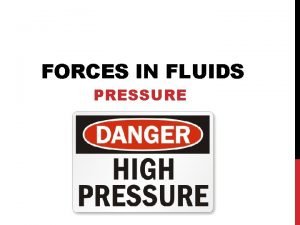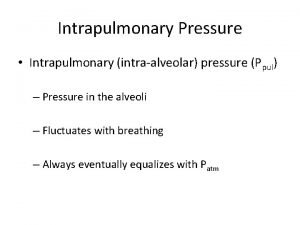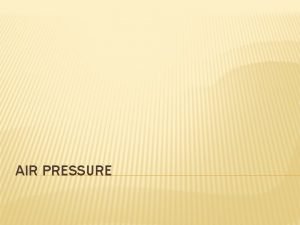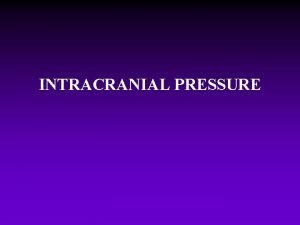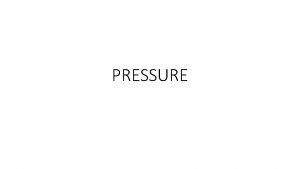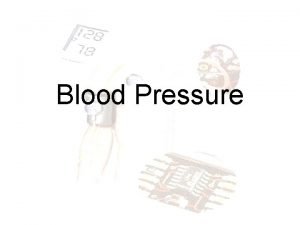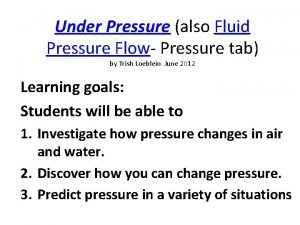Pressure Pressure Why do predators often have SHARP




























- Slides: 28

Pressure

Pressure Why do predators often have SHARP teeth and claws? Why does wearing skis or snow shoes stop you SINKING into the snow?

Pressure is exerted whenever a force is applied over an area. 1. 2. Which one exerts the biggest pressure, 1 or 2? © Boardworks Ltd 2003

Application of pressure A force concentrated on a small area means high pressure, e. g. razor blades, needles, high heeled shoes, spurs, ice skates, sharp knives. The high pressure on the cutting edge of an ice-skate melts the ice and helps the skater slide across the surface. On the cutting edge of a knife a very high pressure is exerted - this makes it easier to cut. © Boardworks Ltd 2003

Exercise 1: Pressure 1. Why do tractors have such large wheels? The large wheels have a large surface area in contact with the ground. Tractors are usually quite heavy and often have to work on soft ground like mud and soil. The large area of the tyres means that they put less pressure on the ground and they are therefore less likely to sink. 2. Why do camels have such large feet? Camels are often found in deserts. The camels are also often quite heavy. The large surface area of their feet on the ground means that they put less pressure on the sand are less likely to sink into the sand. Camels have large feet

Exercise 2: Pressure force is Pressure tells us over what sort of area a _____ acting. Pressure depends upon two factors: the force that is being applied and the ____ area over which the force is acting. The larger the force, the greater the ____. pressure The ______ the force, the lower the pressure. smaller The smaller the area, the _______ greater the pressure. The larger the area, the smaller the pressure. greater area pressure force smaller

Pressure is the force per unit area so is calculated using the expression shown below: Pressure = F Force Area P x A Pressure is measured in: Newtons per metre squared (N/m 2) which is called a PASCAL (Pa) Pressure can also be measured in: Newtons per millimetre squared (N/mm 2); Newtons per centimetre squared (N/cm 2). © Boardworks Ltd 2003

Exercise 3: Hammer and Nail A hammer is used to drive a nail into a wooden floor. The hammer is brought down with a force of 200 N. The area of the top of the nail is 0. 5 cm 2. What pressure is put upon the top of the nail by the hammer blow? Pressure = Force ÷ Area Pressure = 200 N ÷ 0. 5 cm 2 Pressure = 400 N/cm 2

Exercise 4: Pressure Calculations 1 1. What are the units of pressure, force and area? Pressure measured in Pascals. Force measured in Newtons. Area measured in metres squared. 2. A force of 500 N acts over an area of 10 m 2. What pressure is created by this force? 50 Pa. 3. A girl of weight 400 N has feet of area 100 cm 2. What pressure does she put on the ground? 4 N/cm 2. 4. A car of weight 6 400 N has four wheels. Each wheel has an area of 80 cm 2. What pressure does the car put on the ground? 20 N/cm 2.

Exercise 5: Pressure Calculations 2 1. A force of 300 N creates a pressure of 4 N/m 2. Over what area is the force acting? 75 m 2. 2. A pressure of 200 Pa is created over an area of 5 m 2. What force acts to create this pressure? 1 000 N. 3. A tractor has tyres of area 3 m 2. It has a weight of 12 000 N. What pressure does the tractor put on the ground? 4 000 Pa. 4. A truck has tyres of area 5 m 2. It puts a pressure of 15 000 N/m 2 on the road. What is the weight of the truck? 75 000 N.

Fluid Pressure The pressure in SOLIDS always acts DOWNWARDS because of the PULL of GRAVITY. In FLUIDS (LIQUIDS and GASES) the pressure acts IN ALL DIRECTIONS. Pressure in fluids can be used to TRANSFER FORCES. Also, in fluids, the PRESSURE INCREASES WITH DEPTH. Less pressure Higher pressure DAMS are WIDER AT THE BOTTOM than at the top because pressure increases with depth in water.

Pressure in Solids, liquids and gases. • Pressure in solids only acts downwards • Pressure in liquids and gases acts in all directions. • In liquids, pressure increases with depth.

Pressure in liquids In a liquid: Pressure acts in all directions and pressure increases with depth. © Boardworks Ltd 2003

© Boardworks Ltd 2003

The relationship between pressure and depth is shown by a water bottle with holes along its length. low pressure High pressure Pressure (N/m 2) = 10 N/Kg x depth (m) x density (Kg/m 3) The pull of gravity The deeper you go, the higher the pressure The denser the liquid, the heavier it is! © Boardworks Ltd 2003

Hydraulics Hydraulic systems use the principle that pressure is transmitted throughout a liquid. They are used to transfer movement from one part of a machine to another without linking them mechanically. All hydraulic systems use two pistons linked via a pipe carrying a special oil called hydraulic fluid. Force applied here Force transferred here Pressure inside all parts of the hydraulic system is the same © Boardworks Ltd 2003

© Boardworks Ltd 2003

Hydraulics activity © Boardworks Ltd 2003

Hydraulics brakes All hydraulic brake systems (e. g. in a car) use a small master piston and a bigger slave piston. The master piston is used to apply a force. This puts the liquid under pressure. Pressure = Force applied Area master piston The pressure is transmitted to the pistons on all four wheels. © Boardworks Ltd 2003

Air Pressure: Does the person at the top or the bottom of the mountain feel the most air pressure? Who has the biggest column of air above them?

The larger air pressure in the balloon means there are more air particles moving around and hitting the sides. If you undo the end of the balloon the air particles rush out so the pressure inside and outside the balloon become equal. Aerosols work in the same way – the gas it at a high pressure in the can.

Which diver feels the greatest pressure? Height of column of water above diver:

Barometer used to measure pressure

Investigate the link between pressure and volume. • Results: • Conclusion: as volume decreses pressure increses. Volume (ml) Pressure (k. Pa) 20 19 0 18 17 16 15

Barometers - altimeter • Type of barometer … measures altitude based on pressure

Air stops rising when it meets air of equal density, then diverges at high level to produce more wind which eventually sinks elsewhere to complete the circulation cell Pressure, Wind and Weather Systems WINDS are horizontal flows of air; winds blow from areas of high pressure to areas of low pressure (nature tries to equalise pressure) � PRESSURE describes the tendency of the air to rise or to sink at any given place or time. � Air tends to rise or sink as a result of its density. � Insolation Air heated by contact with ground expands; becomes less dense and rises Denser air drawn in at low level to replace rising, less dense air Air density varies with altitude but, at the ground level, air density is governed by its temperature. � Thus, variations in radiation and temperature control pressure and wind. � LOW PRESSURE Sun heats up ground Denser air drawn in at low level to replace rising, less dense air

Pressure effect on Weather Low pressure will bring stronger winds and rains High pressure will bring settled dry weather

Measuring Pressure • Barometers – detect & measure pressure changes barometric pressure – Units measure pressure over area • Millibars (mb) • Hectopascal (h. Pa) • Inches of mercury (Hg) Standard Atmosphere 1013. 25 mb = 1013. 25 h. Pa = 29. 92 in. Hg
 Hey bye bye
Hey bye bye Omnivore examples
Omnivore examples Always, usually often sometimes seldom rarely never
Always, usually often sometimes seldom rarely never Wolverine predators
Wolverine predators Number of stages
Number of stages Striped bass
Striped bass Predators and prey in the rainforest
Predators and prey in the rainforest Keystone species definition
Keystone species definition Energy pyramid labeled
Energy pyramid labeled Cnidaria predators
Cnidaria predators Golden lion tamarin life cycle
Golden lion tamarin life cycle Bearded dragon predators
Bearded dragon predators How do adaptations help animals? *
How do adaptations help animals? * Is the solid portion of a comet a phrase or clause
Is the solid portion of a comet a phrase or clause Platypus poison
Platypus poison How does sponges protect itself from predators
How does sponges protect itself from predators Prey adaptations to avoid predators
Prey adaptations to avoid predators Drifting plants
Drifting plants 6 square faces and 8 vertices
6 square faces and 8 vertices Dont ask
Dont ask Do you usually exercise
Do you usually exercise A young child shown a nine inch round bowl
A young child shown a nine inch round bowl Example of non programmed decision
Example of non programmed decision Works written by shakespeare often have an unhappy ending
Works written by shakespeare often have an unhappy ending Why do new ideas spark change?
Why do new ideas spark change? Alliteration figure of speech examples
Alliteration figure of speech examples Why are parents in oceania often afraid
Why are parents in oceania often afraid At night you see a pedestrian wearing reflective clothing
At night you see a pedestrian wearing reflective clothing Manor economy
Manor economy


